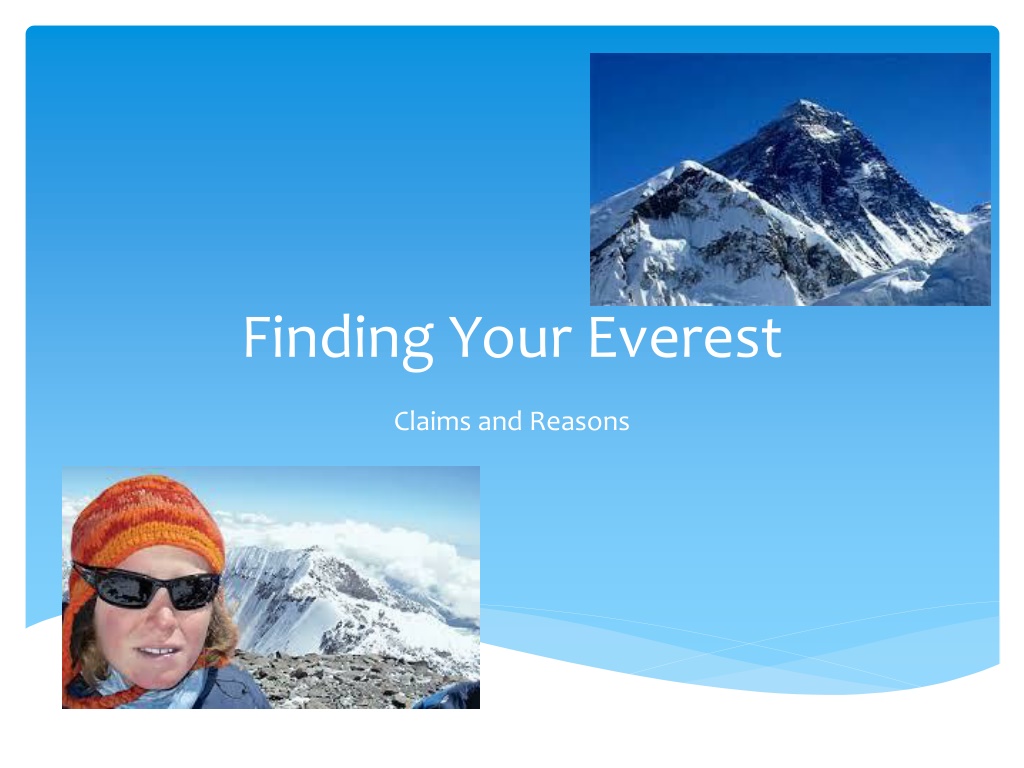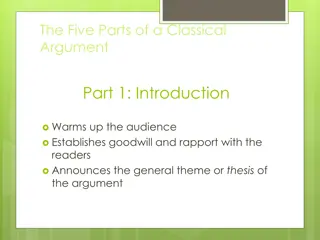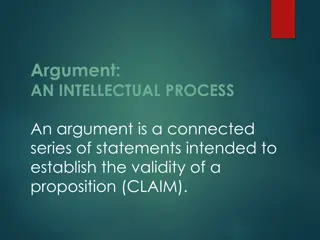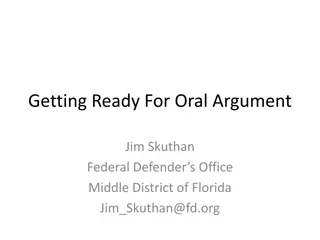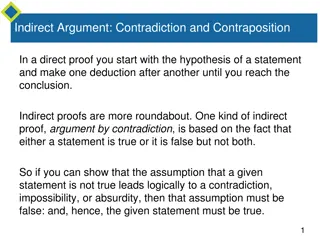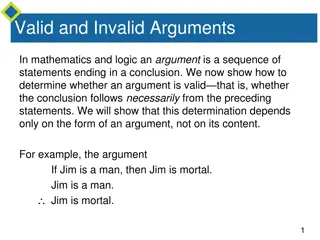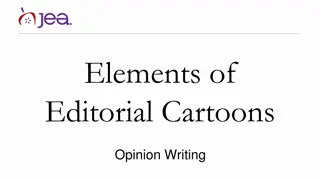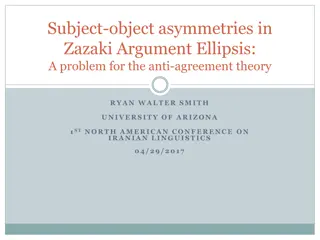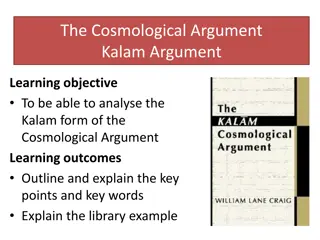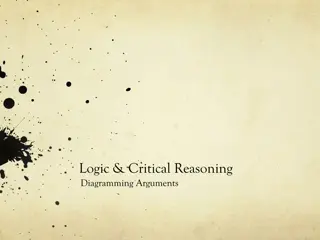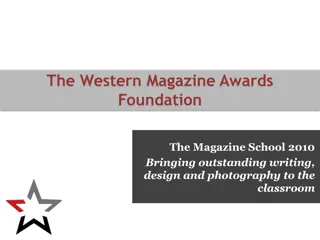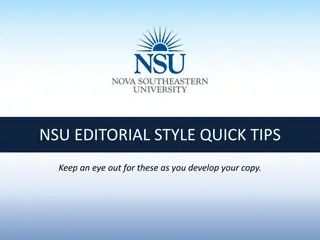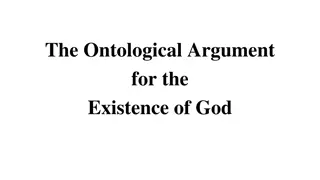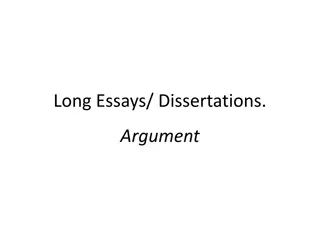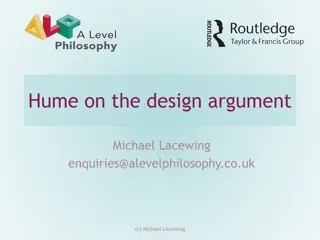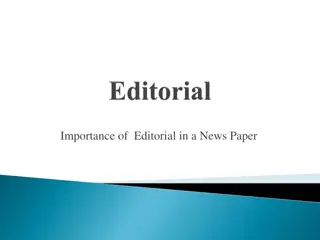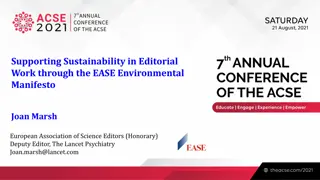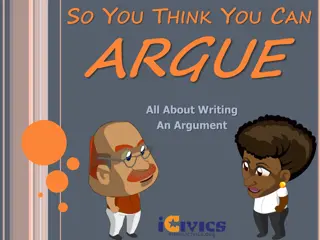Understanding Argument Evaluation in Editorial Writing
Learn how to assess arguments in editorials by evaluating claims, reasons, and evidence. Discover the importance of examining the soundness of reasoning and relevance of evidence to support claims effectively.
Download Presentation

Please find below an Image/Link to download the presentation.
The content on the website is provided AS IS for your information and personal use only. It may not be sold, licensed, or shared on other websites without obtaining consent from the author. Download presentation by click this link. If you encounter any issues during the download, it is possible that the publisher has removed the file from their server.
E N D
Presentation Transcript
Finding Your Everest Claims and Reasons
Standard and Essential Question How do we evaluate an argument for sufficient reasons to support the claim and counterclaim? 7.RI.8 evaluate the argument and specific claims in a text, assessing whether the reasoning is sound and the evidence is relevant and sufficient to support the claims. Trace and
Lets Review Editorial: a written article that portrays someone s point of view, opinion, or perspective on a particular topic Claim: someone s opinion on a particular topic Reasons: statements that help support someone s claim Evidence: facts, statistics, or anecdotes that support someone s reasons
CFU How do the components of an editorial work together? claim, reasons, evidence
Relevance Have you ever been held back by your parents or a friend from doing something that you really wanted to do? What were their reasons to why you shouldn t have done this particular thing? What were your reasons from wanting to pursue it?
What does this mean to me? YOU have a CLAIM, or your opinion or perspective on the situation Your PARENT OR FRIEND has a COUNTERCLAIM, or their response to your opinion This idea of claims and counterclaims will come into play during our next story, Finding Your Everest
On a Sheet of Paper Create these two charts: Claim: Counterclaim: Support: Reason 1: Support: Reason 1: Reason 2: Reason 2: Reason 3: Reason 3: Reason 4: Reason 4:
Lets Start Reading! As we re reading, keep your eyes and ears open to the CLAIM presented. ANNOTATE by underlining or highlighting when you find it.
Model (I do): Finding the Claim I know that when I m finding the CLAIM, I need to be looking for someone s opinion or perspective on a topic. When I read lines 14-21, I see Paul Romero s opinion, or CLAIM, on his son Jordan wanting to climb the seven summits Through reading, I can safely say the CLAIM is that: THE RISK OF CLIMBING THE SEVEN SUMMITS IS NOT TOO GREAT FOR A 13-YEAR-OLD.
CFU What is my next step as a reader after I ve found the claim? What should I be looking for next? What would happen if the author included NO reasons to support her claim?
Finding Reasons Now we need to find reasons that support this claim.
I do
Finding Reasons I do: Reason 1: Lines 7-11 He is up the challenge physically and mentally Reason 2: Lines 11-13 He is well prepared for the climb
We Do
We Do
Finding Reasons We do: Reason 3: Lines 22-33 Reason 4: Lines 42-47 -
Now What? Okay, we ve worked through the claim and we have reasons to support it. Now, if the claim is that: THE RISKS OF CLIMBING THE SEVEN SUMMITS ARE NOT TOO GREAT FOR A 13-YEAR-OLD What would be the COUNTERCLAIM? Or the other side of the argument?
Closure Why is it so important to have reasons behind your claim? Why should you cite a line # along with your reason?
With Your Group Finish reading Finding Your Everest (Lines 48-68) Find 4 Reasons to support the COUNTERCLAIM: THE RISKS OF CLIMBING THE SEVEN SUMMITS ARE TOO GREAT FOR A 13-YEAR-OLD Remember to use line #s with your reasons just like how we just practiced. The timer is set for 12 minutes! GO!!!!
